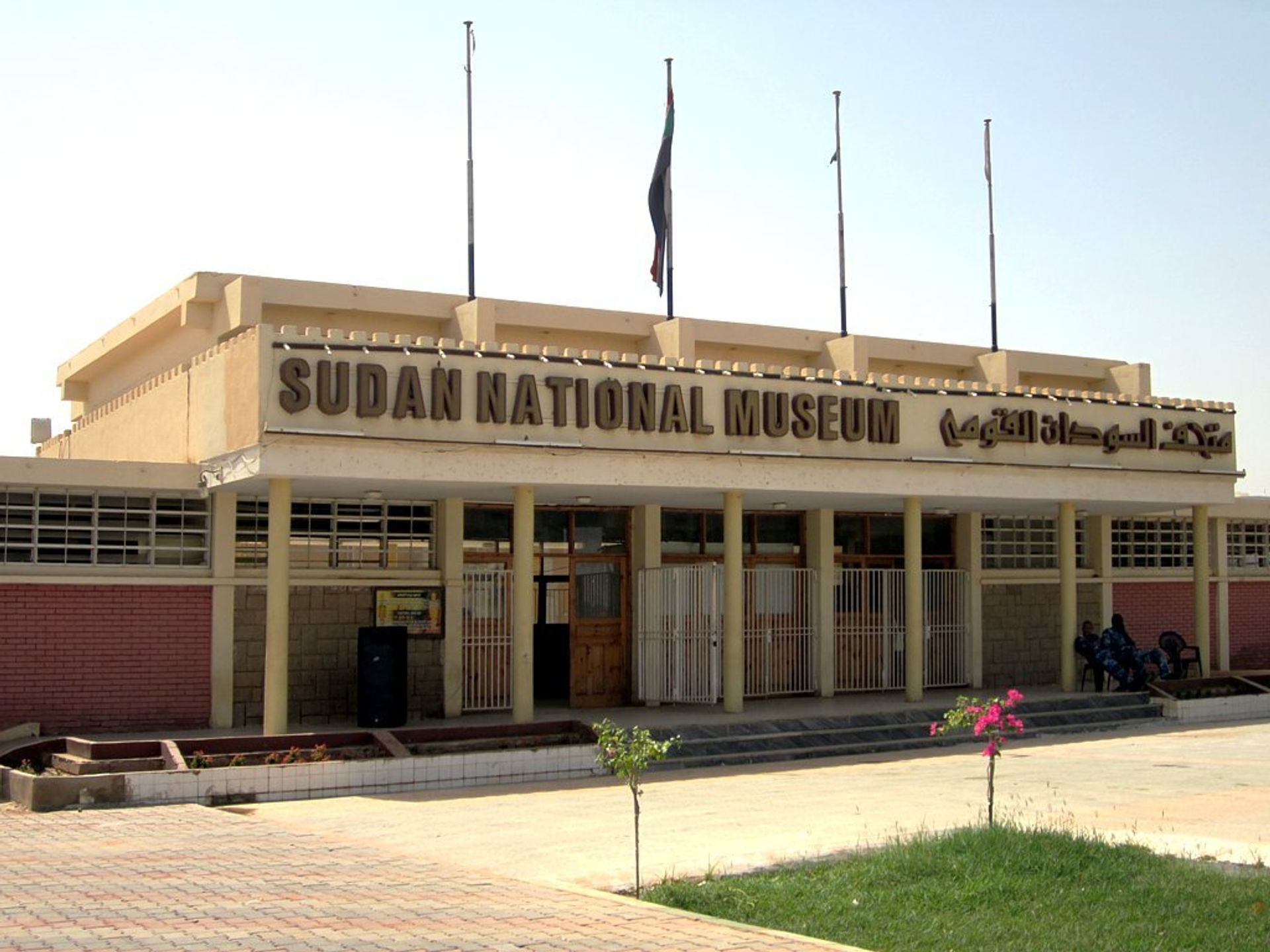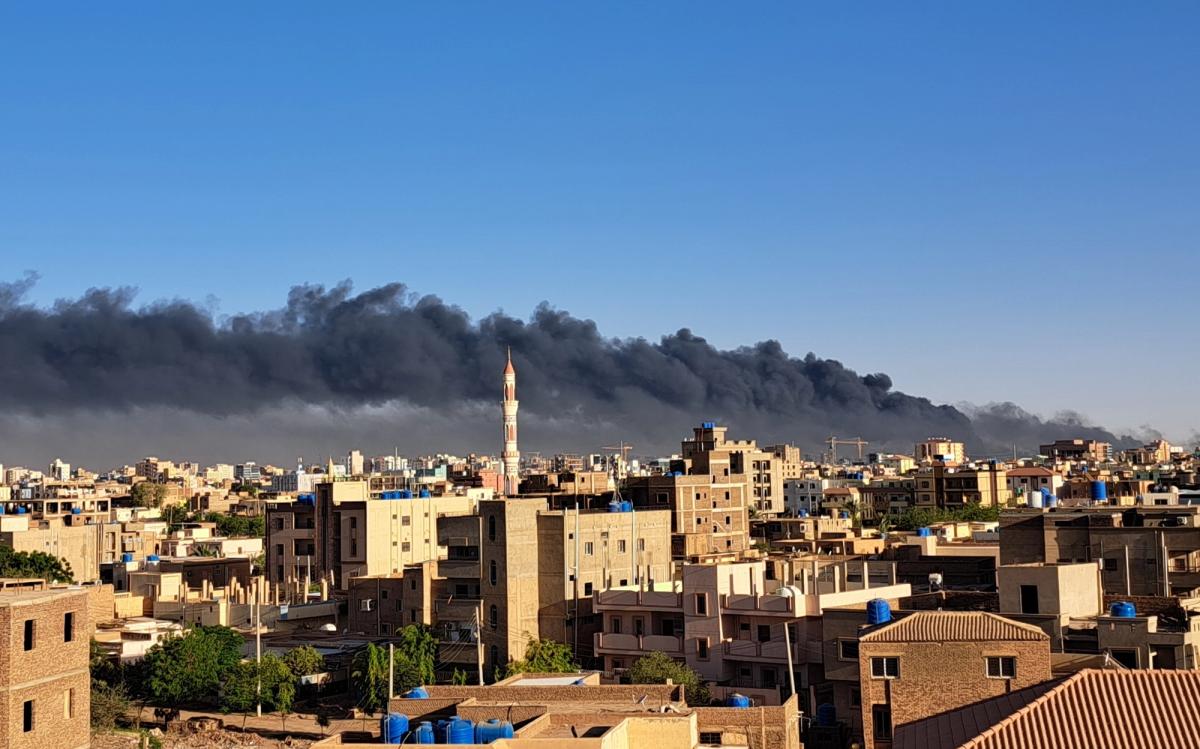As Sudan descends into chaos, sources on the ground in Khartoum say the country's museums are caught in the crossfire and raise fears that artists associated with the pro-democracy movement are coming under attack.
The Sudan National Museum, filled with treasures of Nubian archaeology, has been the scene of fierce fighting between rival military factions in the capital since 14 April, according to reports. The extent of damage to the museum is still unclear, but leading artists and museum professionals in Sudan worry that the collection could be subject to looting.
Museums “are caught in the crossfire of battles between the two conflicting parties”, said Sara Saeed, the director of the Sudan Natural History Museum, in a statement provided to the International Council of Museums (Icom).
Early on the morning of 14 April, shortly after the call to prayer, residents of Khartoum heard mortar and artillery fire. Intense fighting broke out between the state military, headed by general Abdel Fattah al-Burhan, and the Rapid Support Forces (RSF) paramilitary group, which is commanded by a rival general called Mohamed Hamdan Dagalo.
The conflict was initially centred around the army headquarters, the presidential palace and the international airport. But the Sudan National Museum, established in 1971, has also become a battleground.
“The museum is a prime target for both sides of the conflict, who seem to be oblivious to the value and importance of the country's heritage,” Khalid Albaih, a Khartoum-based artist and journalist, tells The Art Newspaper.
“No-one knows how much damage the [National Museum] took,” says Ala Kheir, an artist and photographer based in Khartoum. “Many places got broken into, leaving nothing behind,” he says. “This worries me the most.”

The Sudan National Museum in Khartoum has become a battleground in the military conflict
The intense military clashes have caused residents of Khartoum to flee the city centre and seek refuge away from the violence. This has left museums, cultural sites and other national monuments vulnerable to looting.
“Museums are now without guard to protect them from looting and vandalism,” Saeed said. “In light of the daily deteriorating situation due to the lack of food and life resources, weak souls will be exploited to steal [artefacts from] important museums and smuggle them out of the country.”
Before the violence broke out, Sudan was moving away from military rule and transitioning towards a democratic form of governance after the revolutionary events of 2019, when tens of thousands of protesters rallied at Khartoum’s military headquarters.
“Throughout our recent history, Sudan has been cursed with military dictatorships, but it has also been gifted—like most of the region—with a young population that uses its creative resistance to win back power, bypassing censorship, sharia law, violence and most notably, the world’s apathy,” Albaih wrote in an article for The Art Newspaper in February 2020.
The rolling protests eventually led to the ousting of the authoritarian leader Omar al-Bashir, a military commander who had led the country by force since 1989.
“Art played an important role from the beginning of the political change in Sudan, and it started to engage even more people during the revolution in 2019,” Kheir says. “Many artists changed the conversation to engage more people with important topics that we as Sudanese need to discuss.”
According to Kheir, artists associated with the pro-democracy protests are now being targeted by fighters loyal to the RSF amid the violence. This includes female artists who were afforded more freedoms in the country after the so-called morality police, active during al-Bashir’s rule, was disbanded under the transitional government. The conflict marks “the return of the national security forces that served during al-Bashir’s reign, and this is a scary fact for all activists”, Kheir says.
He claims that a group of RSF forces broke into the home of Saad Eltinay, an artist and photographer based in Khartoum. “When they found his prints of the revolution, they arrested him.” The Art Newspaper was unable to verify this at the time of publication.
Sudan, one of Africa’s largest countries, is renowned in archeological circles for the abundance of its ancient sites, which may now be threatened by the repercussions of the conflict.
In Old Dongola, a seat of Christian power during the Nubian era located on the banks of the Nile, a team of Polish archeologists recently unearthed a hidden complex of chambers containing unique Christian artworks. The site is currently being used as a refuge for families escaping the violence in Khartoum.
Beyond Old Dongola, one of the most important archaeological sites in the region is the ancient city of Meroë. Located around 200km northeast of Khartoum, it was once the capital of the Kingdom of Kush, a powerful civilisation that flourished from the eighth century BC to the fourth century AD. Meroë has more than 200 pyramids constructed as burial places for the kingdom’s royal family and elites.
Another significant archaeological site lies close to the Jebel Barkal or Gebel Barkal mountain. Around 400km north of Khartoum, it was once a religious centre for the Kingdom of Kush. The mountain is home to numerous temples and tombs, including the Temple of Amun, dedicated to the ancient Egyptian god.
The UK has a particular historical connection to the city of Omdurman, located just across the Nile from Khartoum. This is where the Battle of Omdurman took place in 1898 as part of the Anglo-Egyptian conquest of Sudan. The Khalifa House Museum, which documents the conflict, was awarded funding from the British Council's Cultural Protection Fund in 2018 for renovations as well training local staff in conservation and collections management.
While these sites do not currently appear to be affected by the conflict, archaeologists around the world will be hoping for their continued preservation. The looting of antiquities typically proliferates in war zones.
Beyond the current conflict, Sudan remains a country blighted by extreme poverty and displacement. Kheir was born in Darfur in western Sudan, a region synonymous with the genocide of 2003. In March 2009, al-Bashir became the first sitting head of state to be indicted by the International Criminal Court, for crimes against humanity, war crimes and genocide in Darfur.
Kheir’s photography in part meditates on the ongoing consequences of war in Sudan. His work will be exhibited in public spaces across New York this June in a group exhibition titled Reframing Neglect, sponsored by the END Fund in partnership with the NYC Department of Transportation’s Art Program.


